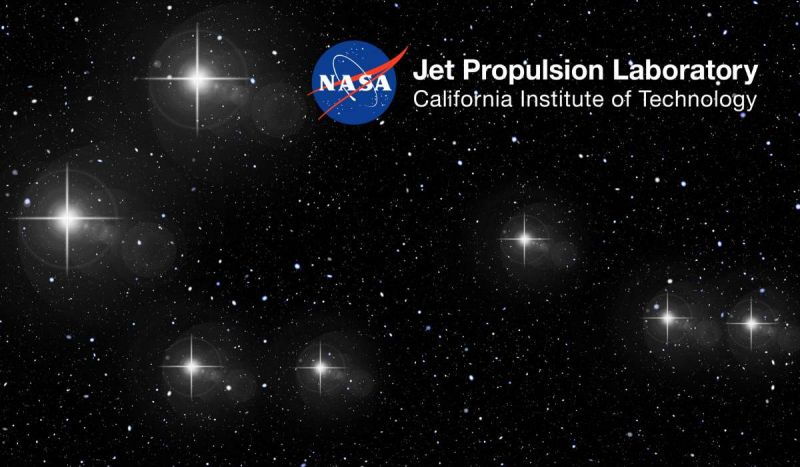
MOUNTAIN VIEW – There is an ongoing drama in the Saturnian ring system that causes small moons to be born and then destroyed on time scales that are but an eyeblink in the history of the solar system. SETI Institute scientists Robert French and Mark Showalter have examined photos made by NASA’s Cassini spacecraft and compared them to 30 year-old pictures made by the Voyager mission. They find that there is a marked difference in the appearance of one of the rings, even over this cosmologically short interval, a difference that can be explained by the brief strut and fret of small moons.
“The F ring is a narrow, lumpy feature made entirely of water ice that lies just outside the broad, luminous rings A, B, and C,” notes French. “It has bright spots. But it has fundamentally changed its appearance since the time of Voyager. Today, there are fewer of the very bright lumps.”
The bright spots come and go over the course of hours or days, a mystery that the two SETI Institute astronomers think they have solved.
“We believe the most luminous knots occur when tiny moons, no bigger than a large mountain, collide with the densest part of the ring,” says French. “These moons are small enough to coalesce and then break apart in short order.”
The F ring is at a special place in the ring system, at a distance known as the Roche limit, named for French astronomer Edouard Roche who first pointed out that if a moon orbits too close to a planet, the difference in gravitational tug on its near and far side can tear it apart. This happens at a distance dependent on the mass of the planet, and in the case of Saturn, happens to be at the location of the F ring. Consequently, material here is caught between the yin and yang of forming small moons, and having them pulled apart. The moons in question are typically no more than 3 miles (5 km) in size, and consequently can come together quickly.
This chaotic region is given additional stir by Prometheus, a moon that’s roughly 60 miles (100 km) in size that orbits just inside the F ring. Every 17 years, Prometheus aligns with the F ring in a way that emphasizes its gravitational influence on the ring’s particles, precipitating the formation of the mini-moons, or moonlets.
“These newborn moonlets will repeatedly crash through the F ring, like bumper cars, producing bright clumps as they careen through lanes of material,” says Showalter. “But this is self-destructive behavior, and the moons – being just at the Roche limit – are barely stable and quickly fragmented.”
This scenario can explain the rapid variation in the number of bright clumps in the F ring, but is it true? If the periodic influence of Prometheus is causing the waxing and waning of the clumps, then there should be an increase in their prevalence over the next few years, a prediction that the astronomers will be checking with Cassini data.
In addition to the drama of moons that come and go over less than a human lifetime, studies of the ring system give insight into how solar systems in general are built.
“The sort of processes going on around Saturn are very similar to those that took place here 4.6 billion years ago, when the Earth and the other large planets were formed,” notes French. “It’s an important process to understand.”
This research was published in the online edition of the journal Icarus on July 15, 2014.
Link to paper: http://www.sciencedirect.com/science/article/pii/S0019103514003625
The Cassini-Huygens mission is a cooperative project of NASA, the European Space Agency, and the Italian Space Agency. The mission is managed by NASA's Jet Propulsion Laboratory, Pasadena, California.
About the SETI Institute
Founded in 1984, the SETI Institute is a non-profit, multi-disciplinary research and education organization whose mission is to lead humanity’s quest to understand the origins and prevalence of life and intelligence in the Universe and to share that knowledge with the world. Our research encompasses the physical and biological sciences and leverages expertise in data analytics, machine learning and advanced signal detection technologies. The SETI Institute is a distinguished research partner for industry, academia and government agencies, including NASA and NSF.
Contact information
Robert French
SETI Institute
E-mail: rfrench@seti.org
Tel: +1 650 960-0239
Mark Showalter
SETI Institute
E-mail: mshowalter@seti.org
Tel: +1 650 960-0234
Seth Shostak, Media Contact
SETI Institute
E-mail: seth@seti.org,
Tel: +1 650 960-4530
Preston Dyches, Media Contact
Jet Propulsion Laboratory, Pasadena, Calif.
E-mail: preston.dyches@jpl.nasa.gov
Tel: +1 818 354-7013





